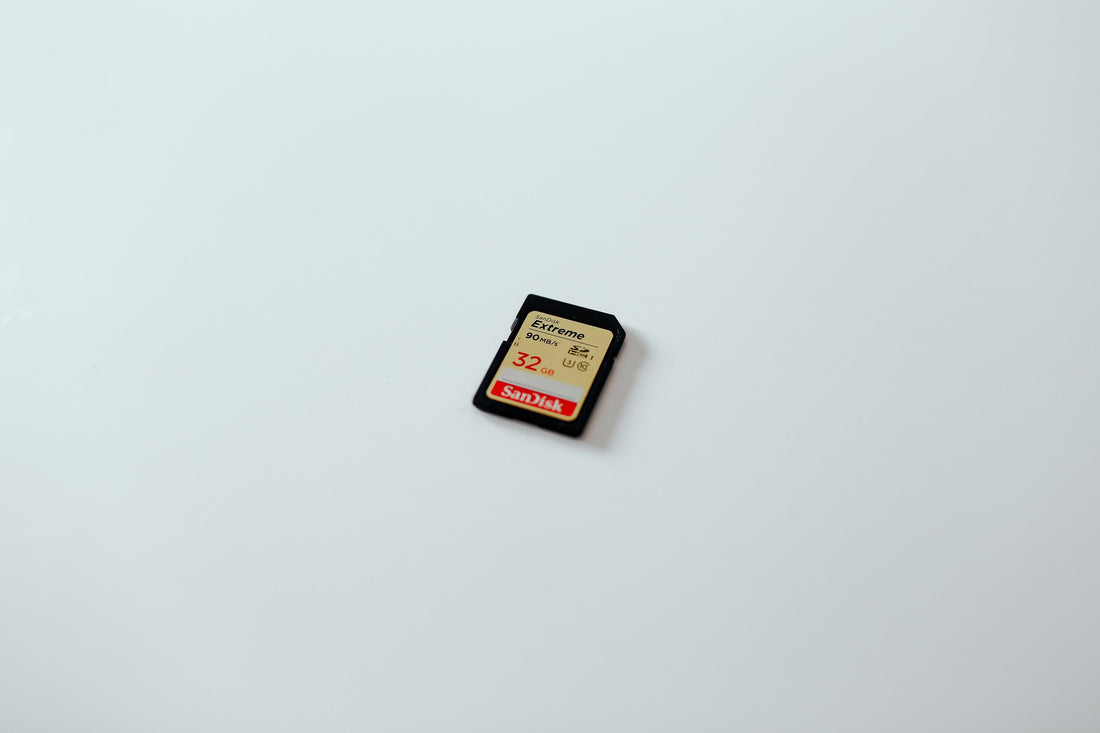
How Many Images Will Fit On My Memory Card?
Share
Written by Daven Mathies
It's a seemingly innocuous question and one we get asked all the time. You just bought a new camera and now you want a memory card that suits it. But how do you know which one to get? Is 8 gigabytes enough, or do you need 16GB, 32GB, or 64GB?
Unfortunately, there isn't exactly a simple answer. The number of pictures you can fit on a memory card is determined by several factors, including number of pixels, file type, amount of compression, and even the complexity of the scene in your photograph. To illustrate just how complicated this can be, take a look at the below chart which lists out the file type and compression options for a Nikon D7100 DSLR and the corresponding number of images that will fit on a 32GB card.

So, how many images will fit on your memory card? If you have a Nikon D7100, the answer is between 596 and 7,900 for a 32GB card (double that for 64GB, halve it for 16GB, etc.) You can see why it begins to get difficult to answer this question. Keep in mind, the above chart only shows options for full-resolution images. I'd like to say that it would work for any 24MP camera, but unfortunately, different cameras process files differently, and they offer different options for compression. Some cameras don't offer a compressed raw file, for example, whereas the D7100 doesn't offer an uncompressed one.* Many lower-end point-and-shoots don't shoot in raw at all and only offer a few JPEG options.
Making things worse, the numbers in the chart are taken from the camera's conservative estimation of "shots remaining" on an empty card. I recently shot a couple hundred photos in raw, lossless compressed, 12-bit, and the resulting images ranged between 20 and 26 megabytes. I'm not the best at math, but if we take a 23MB median file size, I think we'll find that a 32GB card should hold about 1400 images, almost twice what is indicated (32GB x 1000 = 32,000MB / 23-MB per image = 1391). What the heck? Different cameras employ different methods to estimate shots remaining, but generally you have at least as many images remaining as what the display indicates.
Short of creating a chart like this for every camera, how can we easily estimate the number of photos we can fit on a memory card? The easiest way is use a test card, such as those carried by most of the salespeople here at Pro Photo Supply. Just pop the card in the camera, set the file type and compression to how you plan to use it, and note the number of shots remaining and size of the card. If that's not an option, you can guesstimate size for individual image files based on the number of megapixels. For uncompressed raw files, double the megapixels: so, a 24MP sensor produces about a 48-MB file. For compressed raw files, just use the megapixel count: 24MP = 24MB file. For JPEGs, cut the MP number in half: 24MP = 12-MB JPEG. With a 32GB card, this guesstimation technique would yield 667 uncompressed raw files, 1333 compressed raw files, and 2667 JPEGs. Is it perfectly accurate? No. But, it should at least put you in the ballpark.
Keep in mind that when shopping for memory cards, size isn't the only concern. Cards also come in different speeds, and on a modern, high-resolution camera, a slow card can bog down performance. If you are shooting sports or action, you will need both speed and size, but otherwise I tend to actually preference speed. If my budget allows for a slow 64GB card or a fast 32GB card, I'll take the latter. There is also the matter of data security, and using multiple, smaller cards may be safer than one large card in the event of theft or equipment failure. Some cameras, like the D7100, even have two card slots, allowing you double your storage capacity or create an automated backup in-camera.
Sometimes, the simple questions have the most complex answers. Although, for JPEGs anyway, there actually is a simple answer that works. How many images will fit on a 32GB memory card? A lot.
*Lossless compression means that the compressed file is mathematically equivalent to the uncompressed file—no loss of quality occurs. Lossy compression allows for greater space savings, but at the expense of quality.
